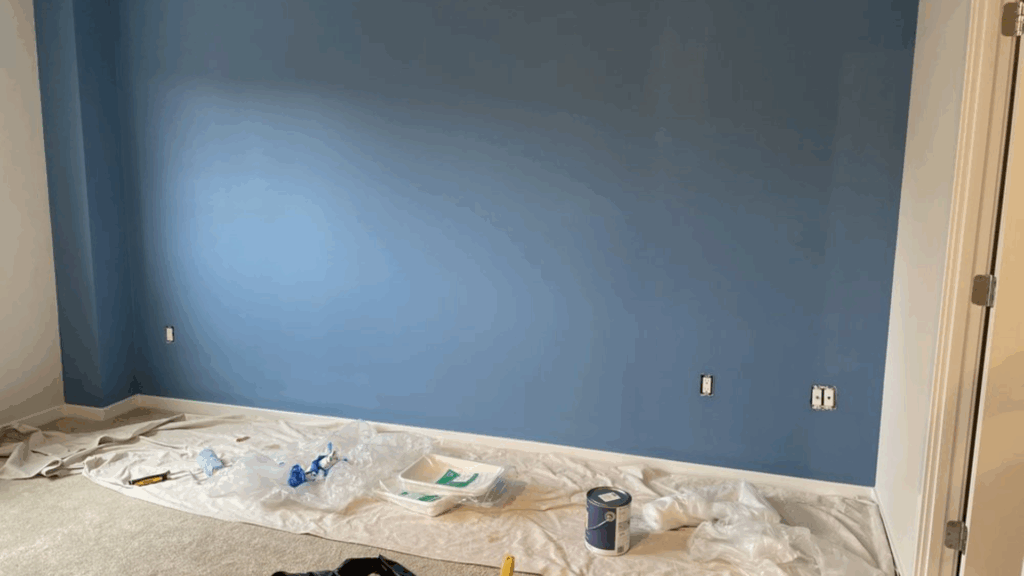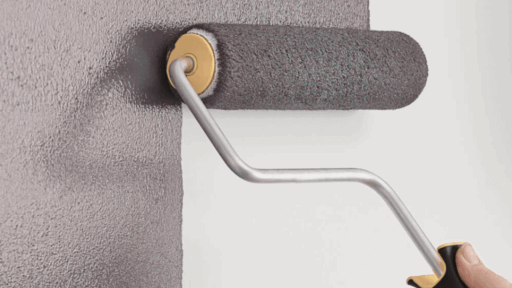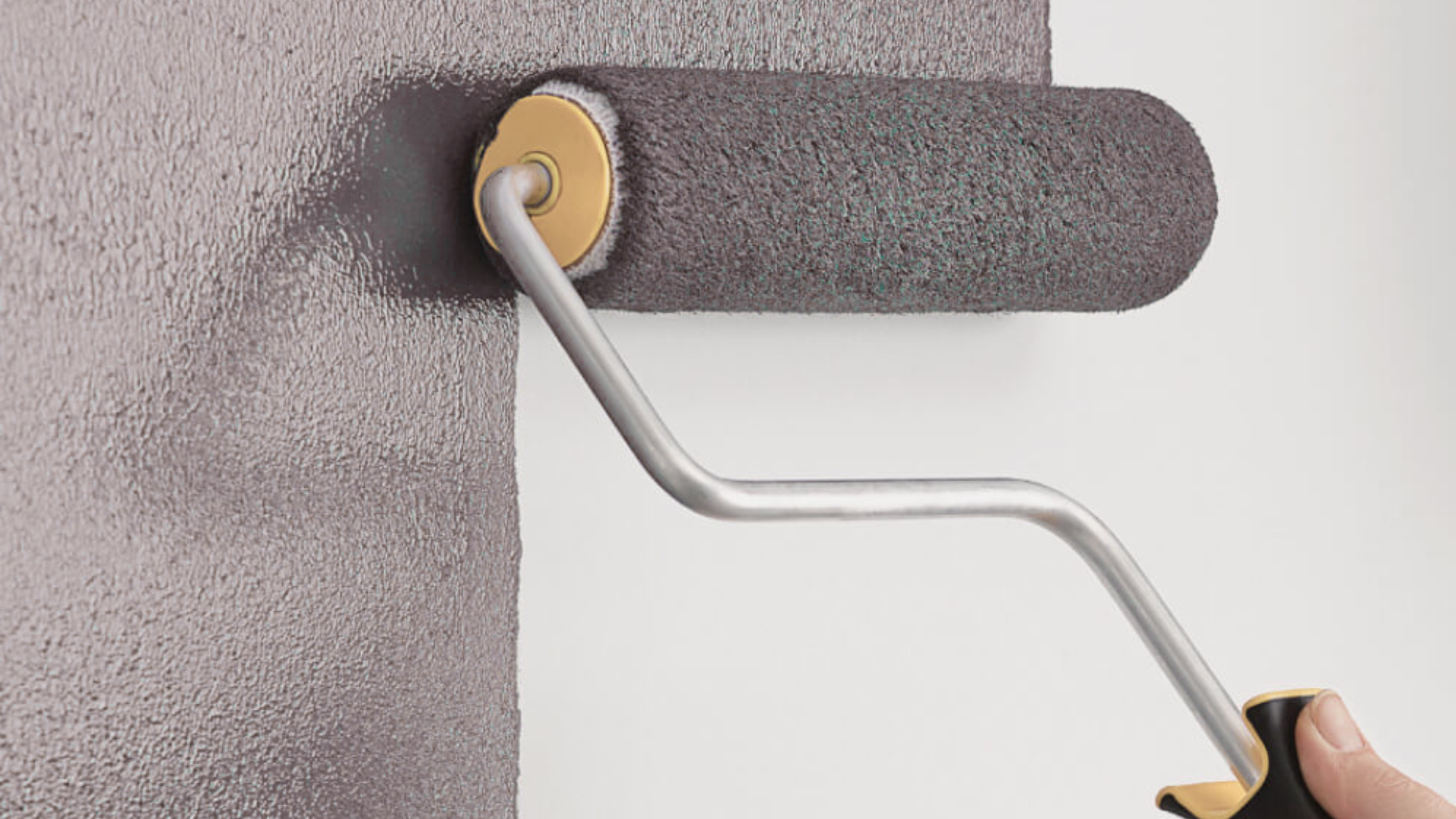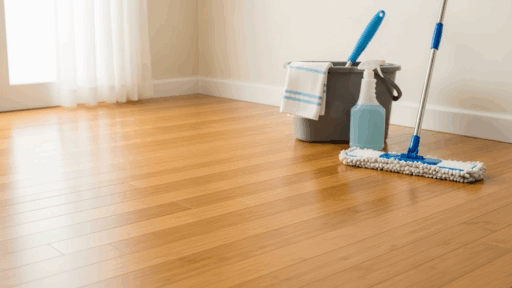Dry time varies for different paints. Some dry quickly, others take hours, and a few might need days to be completely set.
That can be confusing, especially when you’re figuring out when to apply the next coat, move your furniture, or eliminate the paint smell.
I’ve been in that spot – standing in a half-painted room, unsure if it’s time to move on. That’s why I created this guide.
In this article, I’ll explain how long Sherwin-Williams paint takes to dry, by type. You’ll find easy-to-follow charts detailing dry and cure times.
Along with tips to guide you through the process and help you avoid common mistakes. My goal is to provide you with clear and practical advice.
With this guide, you’ll know exactly what to expect and how to finish your painting project with confidence.
Why Paint Dry Time Matters?
Knowing how long Sherwin-Williams paint takes to dry is important for getting great results.
If you touch or paint over a surface too soon, it can smudge, peel, or not stick properly.
Dry time affects everything – from how your finish looks to how long your project lasts.
Dry paint also helps prevent dust, dirt, or fingerprints from ruining the surface. If you’re painting walls, furniture, or concrete, giving the paint enough time to dry means fewer problems later.
If you’re in a hurry, you might be tempted to speed things up, but rushing the process can lead to poor results.
I always make sure the first coat is fully dry before adding a second. It makes the finish smoother and more even.
Understanding dry time helps you plan better and ensures your paint job looks clean and professional.
Factors That Affect How Long It Takes for Paint to Dry

Drying time depends on more than just the paint – it’s also influenced by conditions in the room and on the surface. These are the main factors to consider:
- Room Temperature: Paint dries best between 50°F and 90°F. Cold slows down drying, while heat can dry the surface too fast, leading to cracks or poor adhesion.
- Humidity: Lower humidity (under 50%) helps paint dry faster. High humidity slows evaporation and can cause a sticky finish.
- Ventilation: Fresh air and fans accelerate drying by facilitating the escape of moisture. Poor airflow can trap humidity, extending the drying time.
- Surface Type: Rough, porous surfaces absorb paint and dry faster. Smooth or glossy ones hold paint on the surface, which slows down the drying process.
Dry vs. Cure: What’s the Difference in Sherwin-Williams Paint?
When painting with Sherwin-Williams products, it’s helpful to know the difference between dry time and cure time. They sound similar, but they mean very different things – and both affect your results.
| Term | What It Means | What to Expect |
|---|---|---|
| Dry Time | The surface feels dry to the touch. You can recoat or lightly handle the area. | Usually within 1–4 hours, depending on the product and the room. |
| Cure Time | The paint has fully hardened and reached maximum durability. | It can take 7–30 days, depending on paint type and conditions. |
Dry paint may feel ready, but it’s not fully set until it cures.
Understanding both stages helps you avoid smudges, dents, or peeling and ensures your paint job holds up over time. Be patient – it’s worth it!
Dry and Cure Times for Sherwin-Williams Paints
Not all paints behave the same way – dry and cure times can vary significantly depending on the formula.
Dry time refers to when the paint feels dry to the touch, while cure time is how long it takes to reach full hardness and durability.
Knowing both helps you plan your project effectively, whether you’re applying a second coat or preparing the room for daily use.
| Paint Type | Dry Time | Cure Time |
|---|---|---|
| Latex-based | 1–2 hours | 2–3 weeks |
| Acrylic | 1–2 hours | 2–3 weeks |
| Aerosol | Up to 8 hours | Up to 48 hours |
| Oil-based | 6–8 hours | 5–15 days |
| Concrete | 24 hours | 48 hours to 7 days (varies by formula) |
How to Check If the Paint Is Dry?
Checking the surface the right way can help you avoid smudges, fingerprints, or damage. Even if the paint appears dry, it may not be ready for a second coat or regular use.
Here’s how to tell if the paint is dry to the touch:
- Touch a corner or edge gently with your fingertip
- If it feels cool or slightly sticky, it’s still drying
- If it feels smooth and firm, it’s likely dry
- If you’re unsure, it’s best to wait a bit longer
How Long to Wait Before Touching Up Sherwin-Williams Paint

Timing is everything when it comes to painting. Knowing when it’s safe to recoat, move furniture, or clean the surface can help you avoid undoing your hard work.
Recoat
For latex and acrylic paints, it’s best to wait at least 4 hours before applying a second coat. This gives the first layer enough time to set.
For oil-based paints, wait a full 24 hours to avoid pulling up the previous coat or causing texture issues.
Move Furniture
Most water-based paints are safe to support light furniture after 24 to 48 hours have passed.
For oil-based or concrete paints, it’s best to wait longer – sometimes several days – especially for heavy items or rugs that might press against the surface.
Clean the Surface
Only clean painted surfaces after the paint has fully cured. This process can take up to 2–3 weeks for latex and acrylic paints, and may even be longer for oil-based types.
Cleaning too soon can dull the finish or cause damage.
Sherwin-Williams Paint Dry Time on Concrete Surfaces
Painting concrete is different from painting drywall or wood, and the dry time depends on the product you use and the conditions.
Sherwin-Williams offers several concrete-friendly coatings, including porch and floor enamel, concrete stain, and masonry paint. On average:
- Concrete paint like Porch & Floor Enamel dries to the touch in 4–6 hours
- Recoat time is usually 24 hours, but can vary based on humidity and temperature
- Full cure time may take up to 7 days for heavy foot traffic or placing furniture
Concrete is porous, so make sure it’s clean and completely dry before painting. Cooler temperatures or high humidity can slow down drying.
Always check the product label or Sherwin-Williams’ instructions for the most accurate times. Giving concrete surfaces enough time to dry and cure is key to avoiding peeling, bubbling, or premature wear.
Tips to Make Sherwin-Williams Paint Dry Faster
Drying time can vary depending on your environment, but a few adjustments can help expedite the process without compromising quality. Here’s how to make your paint dry more efficiently:
- Paint in Warm, Dry Weather: Higher temperatures and low humidity accelerate evaporation, allowing paint to dry more evenly and quickly.
- Use Fans or a Dehumidifier: Boosting airflow with fans or reducing moisture with a dehumidifier can significantly cut down drying time, especially in enclosed or damp spaces.
- Apply Thin Coats: Thin, even layers dry faster than thick ones, reducing the risk of drips or uneven texture.
- Stick to Recommended Dry Times: Waiting the proper amount of time between coats prevents soft spots, smudging, and peeling later on.
Conclusion
Every paint type has its timing, and knowing the difference between dry and cure time can make or break your project.
Dry time refers to the point at which the paint is safe to touch, with no smudges or marks.
Cure time refers to the period when the paint is fully hardened and ready for cleaning, weighing, or daily use. Rushing either step can lead to peeling, damage, or an uneven finish.
Always read your paint label carefully, as recommendations may vary by product. If you’re ever unsure, it’s better to wait a bit longer than risk redoing the work.
Planning your steps around both dry and cure times helps ensure smooth results and a longer-lasting finish.
With the right timing, your paint job will look clean, hold up better, and remain protected long after the last coat is applied.








